#badbury hill
Text

Mystical Forest, Beech trees (Fagus sylvatica), Badbury Hill, Oxfordshire, England
‘On the remains of an iron age hill fort on Badbury Hill in Oxfordshire, Badbury Clump is an area of wonderful beech woodland, carpeted in bluebells each spring. On this particular morning, thick fog had descended, creating a magical, ethereal atmosphere, and it was a wonderful experience to be present in the woods with the camera in hand. Shooting into the light, I was struck by the sense of endlessness as the beech trees eerily dissolved into the silent, misty obscurity’
Photograph: Philip Selby
British Wildlife Photography Awards
#philip selby#photographer#british wildlife photography awards#mystical forest#forest#beech trees#fagus sylvatica#trees#badbury hill#oxfordshire#england#landscape#nature
30 notes
·
View notes
Text
What mysteries lie at the captivating Badbury Rings hill fort nestled in the heart of Dorset's picturesque countryside? From its Celtic origins to its Roman connections, this historic site transports us to another era. Owned by the influential Bankes noble family for generations, it wasn't until Sir Henry John Ralph Bankes' passing in 1982 and the subsequent transfer of the estate to the National Trust that opportunities arose for the long-awaited exploration of the site.
Excavations uncovered numerous artifacts, including pottery from the mid to late Iron Age, silver and bronze coins from the Durotriges tribe, as well as Roman coins, glass beads, and bronze jewelry. However, these findings suggest that the hill fort had a relatively short period of habitation. The emergence of the nearby Romano-British settlement, Vindocladia, led to the gradual abandonment of Badbury Rings, allowing it to succumb to the passage of time.
The allure of Badbury Rings still persists, where history whispers through the windswept fields of Shapwick, revealing the resilience of ancient Britain against the tides of time.
22 notes
·
View notes
Text

Had a lovely romp around at Badbury Rings (Dorset, UK) this afternoon. It’s an Iron Age hill fort - we did two laps along the top of two different rings. So good to get out in the countryside after a week of the same two local parks while I was ill.
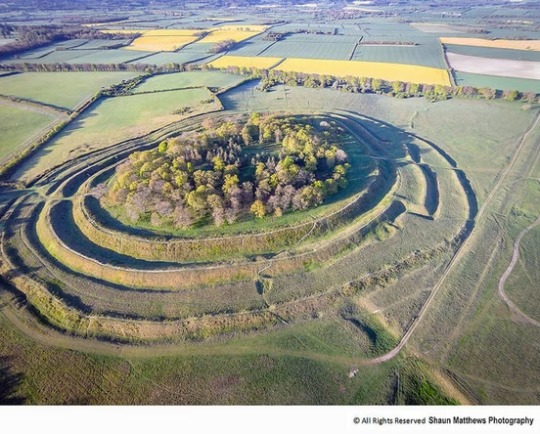
12 notes
·
View notes
Text
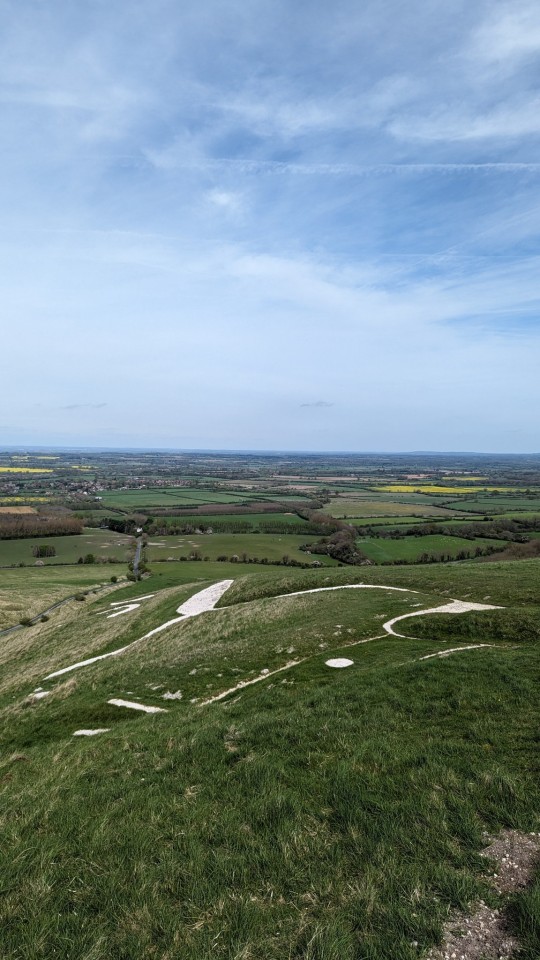
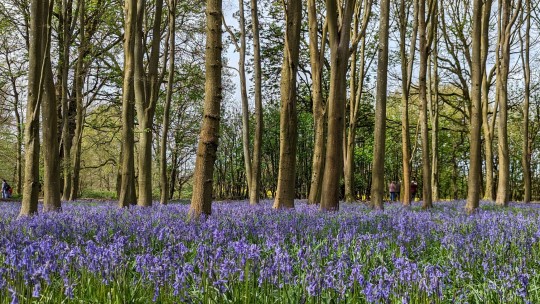




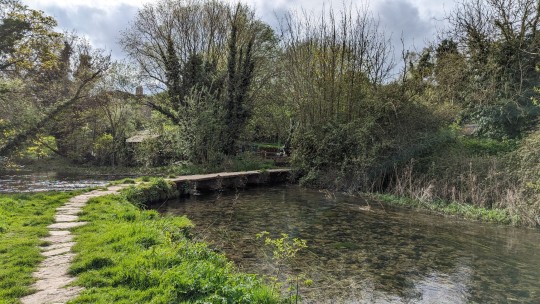
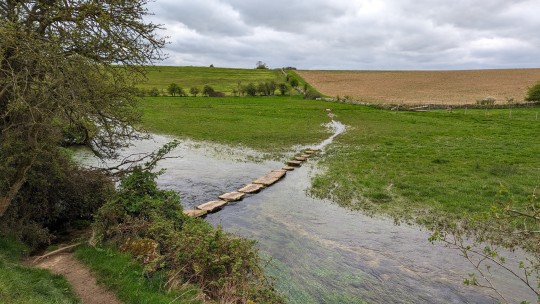
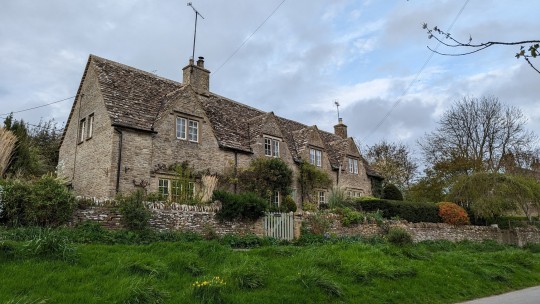
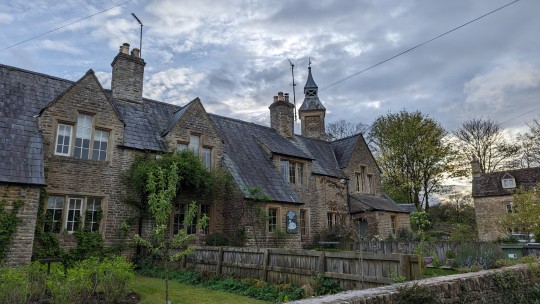
Day 33, 13/04/2024
White horse hill (Uffington) - 1
Badbury Hill - 2, 3, 6
River Leach - 4, 8
Eastleach - 5, 7, 9, 10
1 note
·
View note
Text

Mystical Forest, by Philip Selby – Wild Woods winner | Beech trees (Fagus sylvatica), Badbury Hill, Oxfordshire, England. ‘On the remains of an iron age hill fort on Badbury Hill in Oxfordshire, Badbury Clump is an area of wonderful woodland, carpeted in bluebells. Thick fog had descended, creating a magical atmosphere, and it was a wonderful experience, shooting into the light, as the beech trees eerily dissolved into the silent, misty obscurity’. Photograph: Philip Selby/British Wildlife Photography awards #misty #beech ; Guardian
1 note
·
View note
Text

Badbury Hill, England - by John Starkey
1K notes
·
View notes
Photo

APRIL SHOWERS BRING MAYBE A FLOWERING OF MASCULINE SOULS!
Starkey, John, “Badbury Hill”, England, United Kingdom.
The Male Form... In Photography, Art, Architecture, Decor, Style, And Culture Which Moves Beyond Mere Appearance To Reveal The... SOUL.
By LadNKilt: Earl Of Darlow, Ben
Official Residence: County Antrim Northern Ireland; Main Residence: London U.K.;
Second Residence: Kansas City Missouri U.S.A.
LadNKilt Archive | Message Me | Submit | LadNKiltLife (Biography)
6 notes
·
View notes
Text
Badbury Hill
Another Monday iPad painting.
Our last outing (several weeks ago) was to Badbury Hill, southwest of Oxford. I took a few photographs to sketch and paint from. The bluebells were not in bloom yet when we visited, but thankfully I can add whatever colours I feel like.
Badbury hill was an ancient hill fort and some say that King Arthur defeated the Anglo Saxons here in a battle that presumably also took place at many other similarly named hills across the country.
1 note
·
View note
Text
ISG wins £35m schools trio with standard component design
The Department for Education has awarded ISG three new schools projects to finesse its innovative standard component design approach.
Over the course of several previous projects, ISG has introduced a standardised and inter-operable set of components to its designs.
By transferring and replicating proven techniques and processes, it is now fast-tracking pre-construction periods, saving time in the design phase and improving cost and programming advice at an earlier stage.

Robust data captured from previous education projects are proving the benefits of standard component design, such as structural and roof solutions, while allowing further refinements.
New projects to be fast-tracked
Compass School Southwark, which is the largest to be awarded to ISG on the framework
Two Rivers CofE Primary School – a pioneering Passivhaus Plus project in Keynsham
Chelveston Road School in Northamptonshire – catering to those with moderate learning difficulties
Through regular workshops, ISG brings together designers, suppliers, consultants and end users to find innovative practices, modernising school building.
These fresh wins follow the successful completion of Churchward School in Swindon earlier this year, which represents the latest iteration of ISG’s standard component design approach.
Alongside schemes at Badbury Park, Norton Hill and Monkerton in the South West, each of these schools are being constructed to similar fast-track timeframes, using replicated standard components, such as structural and roof solutions, to achieve consistently high quality and timely delivery.

Zoe Price, chief operating officer for ISG’s UK Construction business, said: “The DfE’s goal to embrace digitised specification in its construction framework leads the way and encourages pioneering and modern practices from its partners.
“ISG is proud to be a part of such an innovative and forward-looking approach.
“By harnessing new and revolutionary Design for Manufacturing and Assembly (DfMA) elements, contractors, consultants and supply chain participants can align operations.
“This in turn enables better collaboration and smarter ways of working that pool expertise across the board and delivers enriched learning environments.”


0 notes
Photo

I love looking up into the tree canopy. Woodlands are my cathedrals... #bluebells #woodlands #trees #itsspiritual (at Badbury Hill) https://www.instagram.com/p/BwzuI4XHvB4efy1ejomQ4eX1R3eFJShpl3KAlg0/?utm_source=ig_tumblr_share&igshid=1nbuuodifjkup
0 notes
Text
If I could turn back time
They say the past is another country, and though foreign travel is currently not recommended, here's where the staff at AG would like to go back to
Garry Coward-Williams, editor
If I could live in any period in time I would go back to 1958 to enjoy the end of the 50s and the whole of the 1960s as an adult, rather than a child.
Why? Well, it’s mainly about music, but also a lot of cultural elements too. Assuming I have money and the knowledge of what the future holds, I could make sure I was always at the right place at the right time.
Garry would like to go back in time to see The Beatles at the legendary Cavern Club in Liverpool (Image: Alamy)
What an experience to pop on the ferry at Felixstowe, travel to Hamburg and see The Beatles perform in the dingy Bambi Kino nightclub, then months later take a steam train to Liverpool and watch them at The Cavern. Catch The Rolling Stones at The Station Hotel on Eel Pie Island. I could see The Doors at The Roundhouse, Eric Clapton and Peter Green playing with The Bluesbreakers, Sid’s Pink Floyd at the UFO and Jimi Hendrix at The Speakeasy.
I could go to football matches and see George Best and other great players in tired old stadiums full of noise and humour — not the plastic cathedrals we have today. And after the match and a few beers I could go to the chip shop and get a thick piece of cod in batter not the slither we get these days and I’d have it in old newspaper.
amateurgardening.com/blog
But it’s not just about entertainment. I could buy beautiful made-to measure-suits of almost any style from a proper tailor for a few pounds at a time when people liked to look smart and wouldn’t have been seen dead in a shell suit. I could go to most pubs and have a sing-along at the piano and it not be unusual.
I could travel all over the country and enjoy hearing genuine regional accents, seeing largely unspoilt countryside and enjoy the juxtaposition between that and the industrial towns of the North.
I could drive a British made car with leather bench seats and walnut dash that needs constant attention and have a genuine sense of achievement whenever I arrived anywhere without breaking down.
Of course, it wouldn’t all be great. I’d have to accept that the available food is hugely limited and if I wanted anything faintly foreign I’d have to make it myself and I’d have to travel to find the ingredients. Imagine a two-hour round trip on a double decker bus to get some lasagne sheets and they wouldn’t even be fresh.
amateurgardening.com/blog
But I wouldn’t mind that, perhaps my biggest challenge would be cooking without non-stick pans! I would also have to do without central heating, waking up in an unheated room on a frosty morning and re-engaging with smelly paraffin heaters. Having said that, you can’t beat the feeling once a coal fire gets going and the room is aglow.
Lastly, I would also have to cope with the old-fashioned British Sunday when nothing happens, the shops are closed and the pubs have even more restrictive hours, but I think I could live with all that…lots of people did.
Ruth Hayes, gardening editor
It may sounds slightly odd, but I want to visit to the Iron Age because living in West Dorset, as we do, you can’t help but notice how that era imprinted itself on the very landscape.
For starters, our house is right next to a Roman road on the other side of which is an Iron Age hillfort – ancient history is everywhere.
Ruth would like to pop back to the Iron Age to learn more about hillfort life
The Bronze and Iron Ages left their massive physical mark in the form of imposing hillforts and eerie burial mounds, known as barrows. The forts were thriving settlements and their chieftains and nobles were buried with great honour and many valuables, tools and weapons in the barrows (long since looted) that crop up in fields and woodland across the county.
Dorset’s landscape is humped with more than 30 hillforts, including Eggardon Hill, Chalbury, Badbury Rings and Hambledon Hill, but the largest is Maiden Castle, an hour’s walk away.
amateurgardening.com/blog
Many of you will remember it from the erotic ‘fencing scene’ in the film Far From the Madding Crowd, starring Terence Stamp and Julie Christie.
It is the size of 50 football pitches, was built in 1BC and is accessed via a series of winding paths through towering earthen ramparts.
From its flat top you can see for miles and hear the wind, local flocks of sheep, traffic on the Dorchester bypass, the sounds of modern semi-rural life. But run down into the ramparts and all sound is deadened and you’re surrounded by a deep, eerie silence.
Maiden Castle is a stunning feat of engineering and I want to know what it was like to live there, when it was newly build and, apparently, a gleaming chalk-white monument to tribal authority. Yes, it would be chilly, the rough clothes and furs would play merry hell with my allergies and I’m not convinced about the diet, but I quite fancy a woad tattoo and need to get among the people who called it home.
They were the Durotriges, a Celtic tribe who minted coins, traded across the Channel and got disatrously on the wrong side of Vespasian and his Roman legions (a late Iron Age cemetery on Maiden Castle contains many bodies showing signs of grotesque injuries).
amateurgardening.com/blog
I want to explore the landscape as it was then and see how society worked, how people lived, interacted (many of the forts are within sight of each other which suggests some form of communication between settlements), traded with other tribes and countries and how they tried to defend themselves against the Romans.
Much of life would have been short, brutal and bloody, but it would be fascinating to put warm flesh on the bones of our important, long-dead local civilization.
Janey Goulding, assistant editor
It was the year we narrowly avoided being hit by two giant asteroids. Cliff Richard released his 100th pop single. TV cameras entered the House of Commons. The World Wide Web was born. And Cher sang ‘If I Could Turn Back Time’.
So, like Quantum Leap’s Sam Beckett, I would travel back to a magical era within my own lifetime: 1989. And like Back To The Future’s Marty McFly, I would strive not to make any significant changes to my own history, and preserve the sanctity of school dances, clock towers and sports almanacs.
The year 1989 is Janey’s dream year, for its cultural and political earthquakes
Because much as I’d love to go back to the Victorian era and rub shoulders with Marie Curie and Wilkie Collins, I don’t think I’d be much cop with cholera and crinolines. And with much regret, while I adore 1950s fashion and music, I suspect I’d be a bit rubbish at that whole pre-feminism and workplace inequality trip. And the thing is, I know 1989 was my year.
There are a few empirical reasons why this was a moment in history unlike any other: interpersonally, culturally, socio-politically: the end of the Cold War era, and the beginning of New Europe (all the more poignant as we witness the end of it). A year where the future felt like a promise we could keep, where global fears and restrictions were dissolving, the old guard was falling away, walls of division and isolationism were literally coming down – and anything seemed possible.
amateurgardening.com/blog
As a wave of revolutions swept across the Eastern Bloc, divided families and friends linked arms and stood side by side on the crumbling walls flanking Berlin’s Brandenburg Gate and chipped away at the old guard with hammers and pickaxes. Years of surging activism was culminating in a quest for reform that would ultimately bring down that wall for good.
In tandem with this revolutionary arc of transformation, as the Iron Curtain buckled, as a human rights protester stood in front of an oncoming tank in Tiananmen Square, and as Pinochet’s dictatorship in Chile teetered on the brink – alongside all that, another revolution scuttled in quieter shoes along the corridors of change.
Softly spoken British computer scientist Tim Berners-Lee outlined proposals for a dynamic information-sharing space, which he then implemented and developed into the World Wide Web. The internet was born.
There were still tragedies, specific and shocking, but they were underpinned with a commitment to lessons learned to ensure that we might move forwards, humbled but progressive, to a more thoughtful, inclusive and socially conscious mindset. This momentum coloured all, from the beginnings of the dissolution of apartheid with the presidential election of Frederik de Klerk in South Africa, to football terrace safety reforms in the wake of the Hillsborough tragedy.
My younger, less cynical self delighted in the possibilities of a world where good could triumph over evil in the minutiae of our lives as well as in the big global events. Life was better, because Robin Williams as English teacher John Keating in Dead Poets Society urged us to carpe that diem – ‘seize the day’ – and make our lives extraordinary, while When Harry Met Sally advocated the exquisite pleasures and comedic pratfalls of male-female friendships, a blueprint that I would spend my adult life researching dutifully and enthusiastically.
amateurgardening.com/blog
The Stone Roses, De La Soul, The Pixies and The Cure released career-defining albums. Madonna challenged the establishment (back when it was still interesting) with pop art as personal meditation. And rave exploded in the climactic throes of the second Second Summer of Love.
And in the ultimate celebration of good triumphing over evil, Coronation Street super-villain Alan Bradley got flattened under a tram in Blackpool, and Dirty Den found out the hard way that you should never trust a man carrying a large bunch of daffodils.
Historians tell us our understanding of the past is a developing creature that is never fully complete. It’s all relative, and many extraordinary moments end up as footnotes in bigger stories. But 1989 truly was one of those catalytic years when the world shifted irrevocably – and I was there. And what I wouldn’t give to be there again, and tell everyone what an extraordinary moment we were living through.
In his book The End of History, brilliant political scientist Francis Fukuyama wrote: “What we may be witnessing is not just the end of the Cold War, or the passing of a particular period of post-war history, but the end of history: that is, the end point of mankind’s ideological evolution.”
Important cultural concerns, progressive ideas and emotional truths were embraced and consolidated. Things changed radically, and they changed for the better. And if life is an elastic band that has the potential to stretch and lift us as far as possible from repression towards enlightenment and hope before we get snapped back to the darkness, then I believe wholeheartedly that 1989 was that year of optimum stretch and maximum freedom.
A pivotal moment of illumination, courage and discovery: of new beginnings, and unforgettable adventures. And Madchester, obviously.
Kathryn Wilson, features co-ordinator
Blame Elizabeth Taylor and Richard Burton – or maybe the cast of Carry on Cleo – but I have always been fascinated by Ancient Egypt, and in particular the women who ruled during the Dynastic period.
The gold! The incredible feats of architecture and engineering! The eyeliner!
Ancient Egypt would float Kathryn’s boat if she could rub shoulders with Elizabeth Taylor and Richard Burton (Image: Alamy)
Apparently, life in Egypt was so good that the afterlife was imagined not as some perfect existence that no one could quite imagine, but simply as more of the same. Even for the lower classes there was time for sports, games, reading, festivals and catching up with friends and family, while happiness, both individual and communal, was seen as an important goal.
Writers (or scribes) were considered immortal and the profession was open to women as well as men, as was medicine and the priesthood, something that was unheard of in Europe until centuries later. In fact, women and men had almost equal rights.
And best of all? The Egyptians knew how to party. Along with the birthdays of their (numerous) gods, there were anniversaries of the current ruler’s deeds, funerals, wakes, housewarming parties and births. Any excuse for a knees-up, complete with feasting and beer.
Wendy Humphries, letters
The period of history that I would love to ‘visit’ is the roaring 1920s, I am passionate about both historical fashion and dance. Put me to the set of The Great Gatsby films or in the chorus line of my favourite musical is 42nd Street and I’d be deliriously happy.
I would arrive early in the decade, it was an optimistic period after the horrors of the First World War. You can only imagine the relief that the long years of fighting were finally over and the effect it had on on society and culture.
Twenties fashion evolved with simpler styles without layers, I love the flapper dress. The dress style had a dropped waste and higher hem line giving a glimpse of a ladies knees!
Wendy would like to return to her house 100 years ago and meet the then residents
Evening dresses were embellished with beads, sequins and embroidery for ultimate glitz and glamour, many were attributed to styles designed by Coco Chanel. Hair was cut into a bob and finished with a cloche hat.
I’d enter wearing the red dress covered in black tassels made for me by my aunt 35 years ago for a fancy dress party. Designs were easy to copy and make at home using cheaper materials such as artificial silk and cotton.
The looser fitting and angled hemline allowed girls to move more freely and they said goodbye to the restrictive girdle while out dancing. The foxtrot, tango and waltz were all popular dances of the 20s. The Charleston started in the Cotton Club, New York, and was the dance that anyone could pick up, you didn’t need a dance teacher, or a partner.
Nearly 100 years on, I would love to re-visit my house, a former Manse. At the time the Minster was John James and he lived here with his wife Anne (shown). We were lucky to have a surprise visit by the great niece of Rev. James and she brought clear photographs taken in 1926 of the house and the couple in the garden. Apparently churches held dances to attract young people – I’d love to think John and Anne enjoyed a bit of Charleston on our parquet floor!
Lesley Upton, features editor
I would like to visit – not necessarily live – in Egypt during the period when the Great Pyramids of Giza were being built about 4,500 years ago. Just visiting would enable me to be a ‘fly on the wall’ at that time, while still being able to return to the present day with all its advantages of medical care, education and advances in technology that make our lives ‘easier’ and enable us to we live longer.
There are three Pyramids at Giza, and the oldest and largest – and only surviving structure of the famed Seven Wonders of the Ancient World – is the Great Pyramid. It was built for Pharaoh Khufu, who reigned for 23 years (2,589-2,566BC).
Les is also a fan of Ancient Egypt, with its monumental pyramids
The Great Pyramid is 481ft (147m) tall. It is believed around 2.3 million blocks of stone, weighing around 2.5 tons each, had to be cut, transported and assembled to build the Great Pyramid.
There are many theories about how the pyramids were built, but even today scientists can’t be sure how they did it. Early theories suggested that slaves built these huge structures, but now it’s generally believed that the pyramids were built by skilled well-fed workers who lived in a temporary city nearby.
The pyramids were primarily tombs for the great and the good of the time – the Pharaohs, who expected to become gods in the afterlife. The pyramids, as well as being tombs, were temples to the gods, and when the pharaohs died they were filled with all the things needed to guide and sustain the Pharaoh in the next world.
Imagine living during those times and seeing these huge structures being built. It must have been amazing.
We are here for you
Although many people are coping well with self-isolation, others are really struggling and feeling completely forgotten and alone.
Here at AG we are doing our best to keep connected to our readers though the magazine, this website and also through social media.
John Negus is AG’s long-standing problem solver
Our gardening ‘agony uncle’ John Negus is also still working hard. Send him your problems and questions, with pictures if you can, and he will get back to you with an answer withing 24 hours, as he has been doing for decades. Contact him using the AG email address at: [email protected]
amateurgardening.com/blog
We already have thriving Facebook page but are also on Twitter and Instagram. These sites are a brilliant way of chatting to people, sharing news, information, pictures and just saying hello – we will get back to you as soon as we can.
Best of all, as gardeners are generally lovely folk, more interested in plants, hedgehogs, tea and cake than political shenanigans and point-scoring, so the chat is friendly and welcoming.
You can find us at:
Facebook: Facebook.com/AmateurGardeningMagazine
Twitter: Twitter.com/TheAGTeam
Instagram: instagram.com/amgardening_mag
So please drop by, follow us, ‘like’ our posts and say hello, we will get back to you as soon as we can.
via RSSMix.com Mix ID 8135640 https://ift.tt/2yUkW7j
1 note
·
View note
Text
Do Landscapes Dream of Electric Sheep?
The term ‘animism,’ while billed as being fairly simple by anthropologists of past centuries, is in fact one of the most difficult barriers that a 21st c. Lovecraftian Mage has to overcome in order to fully understand how Lovecraft’s work can be used as a workable and potent system of magic.
Animism is not just ‘talking to your car,’ believe me, I spent twenty years of my life prior to earning my degrees as an industrial mechanic. I have talked too, cajoled, and screamed at more machines than one can count. I did not feel like at animist in any of those instances, nor was my life enriched by the practice. No, animism is more than that.
My primary background in cultivating an animist worldview are the years I spent being mentored by Ayabe, the Bad River Ojibwe Elder. The mentoring relationship was concentrated on learning the Ojibwe language and culture, but one cannot escape animist ideas in that process. In fact, as I point out in my primary essay on the subject, gender in Ojibwe is not masculine, feminine, or neutral. Gender in Ojibwe is dependent on an ever shifting sense of animate and inanimate objects. That is, things in the world that have a spirit and things in the world that do not.
I am seeking to expand my knowledge of this complex subject, however, and to that end I turned to Paul Weston’s tome ‘Mysterium Artorius’ as it was recommended to Rune Soup Premium Members to gain a deeper understanding of this subject. Mr. Weston begins by connecting us with his first experiences with the Mystery of Arthur:
“From the moment of my first hearing the opening words of… ‘The Enchanted Sword, There once lived a King called Uther Pendragon…’ I had already entered what Jung called ‘the primary myth in the collective unconscious of Western Civilization’ It would lead me to connect with the ideas of fascists and feminists, patriots and pacifists, occultists, mystics, painters, poets, musicians and historians… I developed methods to enhance my receptivity… an ongoing mood, an ambience, a constant background evocation.”
Before we conclude this week’s exploration, we will find ourselves connected with fascists, feminists, patriots, occultists, mystics, and historians, just as Weston did when he first plugged into the power spots that serve as gateways between Arthurian spirit-forms and the real.
Weston connects the longevity, no, the tenacity, no, what is it, the ‘is-ness’ of Arthur directly to the landscape that embodies the myth when he states:
“Regardless of the strong historical arguments against the validity of their Arthurian associations, something seems to connect the legendary locations that frame [King Arthur’s] life from conception to burial. The fundamental factors are landscape that profoundly impact on the human psyche, places that will inevitably attract a numinous mythology… the landscape, history, and mythology… [are a] character. The different elements cannot be separated. They constitute an elusive something that can interact with a person as strongly as a human character, stirring passion, idealism, madness, asceticism, horror, mysticism, and eroticism in all possible combinations.”
I think what’s important here is that landscape, history, and mythology are not framed as characters, plural, but a singular entity that embodies all these things. When we look at a mountain range, it is just a mountain range, something in our visual field. If we are standing in a place where we know the history, or some of the history, of the land around us, the mountains are inspirited a bit by that association. If we are standing in a place whose history we are familiar with and whose stories and myths we also know on an intimate level, having learned them from childhood, well then, the mountains are not just mountains, they are a sleeping giant, or the home to dark cryptids, or places of spiritual power that are always in our view, in our reality. Knowing this, Weston offers us some depth to the history of Albion:
“Golden Age beliefs about the underworld and a mother goddess were rejected by the solar warrior culture of the Bronze Age. West Kennet long barrow was sealed up with tons of debris. This was one form that the British version of the banishment of Cronus took… The Greek Cronus was banished to an island realm in the West. Later sources speak of a British Cronos imprisoned in a cave on some far western island, resting in eternal sleep from which he uttered strange prophecies. These details don’t fit the Greek myth and therefore may apply to an indigenous deity in some way analogous to Cronos… Blake has a passage where his Albion falls into a prolonged deathly sleep in a manner that seems a clear pointer to the British Cronos”
And with that history, connections are made in the human mind as pattern recognition is very likely the most human trait. In this human’s mind, the idea of a physical manifestation of the banishing of Kronos is really intriguing. The version of Kronos described in the quote above tracks very closely with HPL’s description of Cthulhu, and if we hold these descriptions in mind the argument that Cthulhu as the indigenous deity of England, somehow informing the Arthurian Mythos, isn’t too far fetched. Weston continues in this vein:
“Celtic culture was never totally suppressed by the Romans. Centuries later, as the empire declined, temple shrines began to appear on the old prominences again. There is evidence for such at Badbury, Maiden and Brean Down. The most notable was at Lydney in Gloucestershire, a dream incubation temple to Nodens whose son was Gwyn ap Nudd, famously linked to Glastonbury Tor.”
This dynamic, of the ancient remaining asleep while Rome stands over it’s living tomb, only to make itself known once the West has retreated is a plausible analogy for a lot of Lovecraft’s plot points, the ‘degenerate’ families of New England, once rich and fat on materialist exploits and now lean and living off of the woods have eschewed the Roman and Greek gods of the West (ever present in Lovecraft’s work) and are busying themselves with the rebuilding of shrines to the chaotic deities of deep space that existed before. There is an undercurrent here of the pagan gods supplanting or rather, migrating, into the landscapes populated by Lovecraft’s ‘Others,’ an act of which they are fully aware and cautious about. The trepidation that Ulysses in The High Strange House in the Mist has when the shadows start wrapping on the windows before he throws the door open for Poseidon illustrates this. Lovecraft also, very purposefully, brings in Nodens as an ancient deity with links to the Night Gaunts and the Dreamlands.
Weston then goes on to offer us some background on ‘The Wild Hunt,’ a phenomenon I have always associated in my mind with the ‘Unseelie Court’ as I found it in Alan Lee’s ‘Fairies’ whence I first picked that book off of my mother’s shelf.
For Weston, The Wild Hunt has a slightly different feel that I once again (and perhaps this is due to my saturation in Lovecraft’s mythos at the moment) find connections to the subject of our research:
“The Wild Hunt is said to ride out from Cadbury Castle in the direction of Glastonbury [following] a path that has come to be known as Arthur’s Hunting Causeway… Geoffrey Ashe [produces] a magnificent depiction in his… novel ‘The Finger and the Moon’… It… begins with a repeated ‘strident terrible horn blast… as the landscape… starts to strangely glow. ‘The Great Bear wavered in the sky and its shape altered. Polaris lurched sideways. New lights glared over the Mendips like supernovae’… a white shadow appears… ‘a medley of unhuman bayings… skulls with decaying flesh… sat on bodies upheld by stiff leather… They swept… on to the hill from vast perspectiveless spaces… generation upon generation of vanished sons and daughters of Albion…’”
The mention of The Great Bear and Polaris track with Lovecraft’s Dreams in the Witch House, and the snippets of description here, the decaying flesh coming form perspectiveless space, tracks with the Lovecraftian Magical Aesthetic well. Pulling on the Arthur-as-Elder-God thread a bit more:
“Arthur as echo of some primal deity may not be as far-fetched an idea as it has occasionally seemed. To think of Arthur as Lord of the Dead can be a very potent idea. In this role he is ruler of the ancestors, all of them, from the Stone Age to the Somme and beyond.”
Our Lovecraft tale for this week, The Street, is one built on a foundation of similar animist thought-forms, with the author setting this scenery down in the first line:
“There be those who say that things and places have souls, and there be those who say they have not; I dare not say, myself, but I will tell of The Street.”
While the narrator here is taking a neutral stance, he is, in fact, siding with ‘those who say that things and places have souls’ by choosing to tell the story of The Street. Lovecraft continues fleshing out the story, so that we have landscape, we have a place (and as we will see a continuity) in history, and the beginnings of a myth to surround it:
“At first it was but a path trodden by bearers of water from the woodland spring to the cluster of houses by the beach. Then… they built cabins along the North side; cabins of stout oaken logs with masonry on the side toward the forest, for many Indians lurked there with fire-arrows. And in a few years more, men built cabins on the South side of The Street.”
Some of the magical tech derived from The Street can be applied to any small town main street, expanding our aesthetic to this very familiar landscape in America, a place existent in all regions, not just his most familiar, New England. We continue to follow The Street-as-spirit through time, finding more patterns:
“Up and down The Street walked grave men in conical hats… and there were also their bonneted wives and sober children. In the evening these men with their wives and children would sit about gigantic hearths and read and speak… and the children would listen, and learn of the laws and deeds of old, and of that dear England which they had never seen, or could not remember… And the children’s children… grew up. The town was now a city, and one by one the cabins gave place to houses… of brick and wood, with stone steps and iron railings and fanlights over the doors… So The Street drank in the dreams of a young people, and rejoiced as its dwellers became more graceful and happy.”
Here, there is a thread connecting place to older places by way of the humans that inhabit it. There is something here about how spirits of place not only inhabit the landscape but infect and are carried with those that existed in that landscape, the genus loci then traveling through generations, via story, via the word virus. This is the way that our mountains in the introduction gained their power and ultimately, how we are able to recognize their sentience. This quote gets to something that I didn’t realize was missing in the discussions around animist landscapes. These discussions center on the animacy of the landscape and how it is older than us and alive, and if humans come into the conversation they are either a) passively living in the animate landscape or b) destroying said landscape and disrupting the ‘timeless’ genus loci. This is not an animist perspective. A true animist perspective recognizes that the wider world is animate but that also humans are animate and there is an interplay in the spiritual ecology of all types of spirits. And where there is an interplay of species in an ecology, there is ecological niche construction and those magical niches interact with and evolve along with each other, changes in one reverberating through all. This quote from The Street recognizes that the street-as-spirit-of-place is changed and influenced, but not necessarily disrupted, by the other spirits that inhabit its ecological niche. This idea of an animate spiritual ecology is continued:
“There were in that Street many trees; elms and oaks and maples of dignity; so that in the summer the scene was all soft verdure and twittering bird-song. And behind the houses were walled rose-gardens with hedges paths and sundials, where at evening the moon and stars would shin bewitchingly while fragrant blossoms glistened with dew. So The Street dreamed on…”
That one phrase at the end, where Lovecraft lends the street the ability to dream, triggered a cascade of questions for me. Is dreaming a condition of being a spirit? Is it the primary signifier? Does the landscape dream us as we dream it? This reverses or deepens the aboriginal concepts put forth in the very beginning pages of Bruce Chatwin’s ‘Songlines’ [https://amzn.to/2AZUUzq] where the landscape did not exist until it was dreamed into being by the ancestors. Conversely, did the ancestors exist until the landscape dreamed them into being? I believe that dreams are no more exclusively a human phenomenon than language is. Yes, androids do dream of electric sheep, those individual AIs chatting each other up in a language we don’t understand, they are dreaming each other and speaking in the Babelian language of dreams. Now that Lovecraft has fully established the place, and the history, he continues to elaborate on the details of the mythology of the Street:
“In time… New sounds came from the distance — first strange puffings and shrieks from the river… and then… strange puffings and shrieks… from other directions. The air was not quite so pure as before, but the spirit of the place had not changed… Nor did the spirit change when they tore open the earth to lay down strange pipes, or when they set up tall posts bearing weird wires. There was so much ancient lore in that Street, that the past could not easily be forgotten.”
The difference between spirits of place and humans is our transitory, frankly, ephemeral nature as corporeal spirit-forms and the landscape’s steadfastness. Lovecraft writes that the ‘spirit of the place had not changed…’ in the face of our own progress, it does change, we do change it, but in the way that bacteria multiplying in our microbiome changes us. It is a deep fundamental change that is only reflected by the host after countless generations. That is why we view spirits of place as unmoving and unchanging, it is because we have the perspective of the figurative mayfly and our magical niche construction therefore, has very little immediate impact. Even in the face of global climate change, brought about by our niche construction activity, the spirit of the mountain looks forward, it’s snowy hair brushed back by only a passing breeze.
It is at this point that the tale of The Street takes a dark turn, and not dark in a cool Azathoth crawling chaos way but that sticky real human darkness, like the ooze covering Hunter S. Thompson’s drunken reptile zoo.
While I maintain that there are not a statistically significant amount of tales focused on xenophobia in Lovecraft’s oeuvre, when they are encountered they need to be dealt with. If we are layering Lovecraft’s tales onto the tarot, the thread of xenophobia is the reversed aspect of any card in our system. In The Street, we have a very eloquent argument for the animacy of the environment imbricated on top of this xenophobia. In the case of this particular tale, it was focused on Russians and communism and immigration from the Occidental East into the Boston area. It is a (if we are embedding the argument in place [which is not an approach I recommend but one worthy of mentioning in this case] the Red Scare brand of xenophobia was extremely common) reaction against unionization, exacerbated by the Boston Police Strike of 1919.
To me, this calls up the very relevant infiltration of nationalism and neo-nazism into contemporary pagan, heathen, and modern animist belief systems. Just as Lovecraft does in The Street (try to stay with me as I work with the tale as an animate being separate from the man [to link moral, ethical, and political beliefs of an author to all of their work is to destroy the life in the work] a text that is interacting with us and not a man that is speaking to us from some place in time), these modern infiltrations use the ‘idea’ of spirits of place and spirit-forms such as the Norse deities to reinforce and legitimize their own nationalist and xenophobic philosophical fallacies. The same (can we call it) appropriation is very likely being applied to the King Arthur mythos, as is pointed out by Elizabeth Archibald in this recent discussion on the recent Guy Ritchie silver screen version of the myth. From the article:
“King Arthur, according to legend, is not dead. He’s only sleeping. Depending on which version of Arthurian mythology you adhere to, the warrior king renowned for his round table, chivalrous knights and nobility is currently slumbering beneath Hadrian’s Wall, Arthur’s Seat, Mount Etna or Glastonbury Abbey. He will return to reclaim his title when the nation needs him most.
As if by magic, with the UK on the brink of leaving Europe and in the midst of an election campaign with grave implications for the very future of the kingdom, King Arthur comes back from the dead…
is this version, essentially, Brexit: The Movie? Are we watching Hunnam, as Arthur, representing an idealised modern-day England – perhaps even the wider UK – as isolationist, mighty, proud, morally upstanding, righteous, powerful and independent?”
The article asks very relevant questions and we can see this trope, this turning of the idea of an animate place, a deep embedding of myth-in-place, fueling the remainder of Lovecraft’s tale of The Street, where he calls upon the ‘demons’ of communism and immigration that put his animate street-as-person into a deep sleep with their ‘terrorist’ union-organizing activity.
The infiltration of nazism into pagan circles is well known, but what is the reaction from the magically adjacent community? This recent article from the New York Times quotes one pagan leader’s response:
“‘I am so sick of those questions,’ said Stenar Sonevang, the spokesman of the pagan group, the Nordic Asa Community… ‘ [it] has got nothing to do with the Nazis, I promise you.’”
The response is fatigue, quietness, and frankly supplication. It amounts to:
‘I just want to be left alone to worship Thor and not have to worry about the rest of society.’
I am paraphrasing, but I think my point is coming into focus. By the end of this exploration I hope that it will be clear that this type of passivity is the wrong response.
In Sarah Anne Lawless’ excellent article ‘Everything You Need to Know About Animism’ she points out that animism includes the belief that:
“Spirits of place (genus loci) are thought to be either the actual soul of the land or a soul who has come to reside in a hill, stream, or grove as its guardian and benefactor.”
This understanding has led to the Whanganui River being granted the same legal rights as humans but Animism is also the foundation of the Japanese national identity (in this case, Shintoism), and for all of their wonders and beauty, Japan is one of the most xenophobic countries on the planet, to the point where the preferred approach to health and elder caregivers for their equivalent Baby Boomer generation are robots when the natural alternative are caregivers from other (not-Japanese) nationalities immigrating to fill the gap in service. Xenophobia, I would argue, is one (stress on the singular among a plurality) of the reasons for the rise of Techno-animism and the centricity of this movement being in Japan, for if you are to replace humans that your culture does not approve of and replace them with robots, the next (ill)logical step in your rationale is to inspirit those robots with personhood.
It is through Techno-animism that we see that the landscape does indeed dream of electric sheep.
Returning to Lovecraft, if we are to jailbreak ‘The Street’ in its totality for a Lovecraftian Magical Aesthetic, the trick is to use the tale to remind us as magically-adjacent humans to openly recognize the good and the bad in thinking with an animist world view. Use The Street as a reminder that the most gentle and beautiful interactions between genus loci and humans is balanced with the very human tendency to co-opt and imbricate bad ideas on top of good, to lend the former more authority and credibility.
Our tarot card match for ‘The Street’ is the Two of Swords.
Our familiar friend, the Livre de Thoth of Etteilla offers two keywords for us to work with. Amitie, or friendship, and Faux, or false.
Friendship stems from the Old English freondscipe, which enjoyed the meaning of ‘mutual regard.’ Friend is traced back to the PIE *pri-, meaning ‘to love’ which moves forward into Germanic and Celtic with a sense of ‘not in bondage’ and is related also to afraid, free, Friday and Frigg the Germanic Queen of Heaven, the wife of Odin, whose day is Friday or more specifically, Frigeaefen, a time we would relate closer to Thursday evening. Bringing it back to Weston’s Mysterium Artorius, the Queen of Heaven makes another apparition:
“On of the fragments we have concerning Arthur’s battles mentions how he displayed an iconic image of the Virgin Mary on his shield and, thus protected, single handed massacred his opponents… Some have doubted this Marian devotion but her cult was powerful in the Byzantine Empire where both armies and navies went into battle displaying her image.”
Friday is the day of Venus, of Aphrodite. Odin’s day, or Wodenday, is our Wednesday, aligning him with Hermes. So the idea of friend congeals into one archetype, Hermaphroditus, the son of Aphrodite and Hermes, who fell in love with and sought to never be apart from the nymph Salmacis. Salmacis, it is of interest to note, was an atypical nymph who instead of following a path of the virgin, instead empowered her own sexuality, even attempting to rape Hermaphroditus in one instance, fulfilling the typical role of male deities in that pantheon. The word friendship, therefore, in the sense of ‘mutual regard,’ is a trading of power, a giving up by both parties, a becoming one with each other.
In the context of The Street, it is the foundational animist relationship between humans and the environment, both natural and built, for we inspirit our own buildings and cities as we create them.
Our second keyword, False, is from late Old English and has a meaning of ‘intentionally untrue’ or in the context of religion, ‘not of the true faith’. English is the only language that applies a sense of deceit to the word and by extension, treachery, disingenuous, contrary to reason.
The duality of our jailbroken tale is at the front of this card, which offers us instructions of how to live an animist life by giving of our selves to all spirit-forms and the landscapes in which we live as they do us in some form or another and also warns us that to misuse or misrepresent this relationship is contrary to reason at the least and treacherous and world destroying at the worst.
1 note
·
View note
Photo

A glorious SUNday shot by my talented sister @andriani_photography And off to London again today meetings, friends and lunch plans ahead ☀️🇬🇧 #translatorslife #sunday #mondaymotivation #monday #mondaymorning #weekend #weekendvibes #hat #sunhat #photography #lightandshadow #shadowandlight #scarf #sundaywalks #southengland #explore #exploring #badburyhill #intothewoods #oxford #oxfordshire #summerinengland #englishsummer #summer2018 #heatwave (στην τοποθεσία Badbury Hill)
#summerinengland#englishsummer#weekend#hat#southengland#weekendvibes#mondaymorning#heatwave#oxford#photography#lightandshadow#sunhat#explore#translatorslife#exploring#shadowandlight#intothewoods#badburyhill#sunday#sundaywalks#mondaymotivation#summer2018#scarf#monday#oxfordshire
0 notes
Photo

Had a lovely wander around Badbury Hill yesterday, making the most of being down south by enjoying the beech woodland. #bluebells #oxfordphoto #oxford #oxfordshire #earthpix #earthpics #nature #wood #forest #trees #flowers #spring #seasons #uk #landscape #beautifulearth #picoftheday #countryside (at Badbury Hill)
#earthpix#earthpics#forest#spring#oxfordphoto#bluebells#trees#seasons#landscape#beautifulearth#picoftheday#oxford#nature#oxfordshire#uk#countryside#wood#flowers
0 notes
Photo
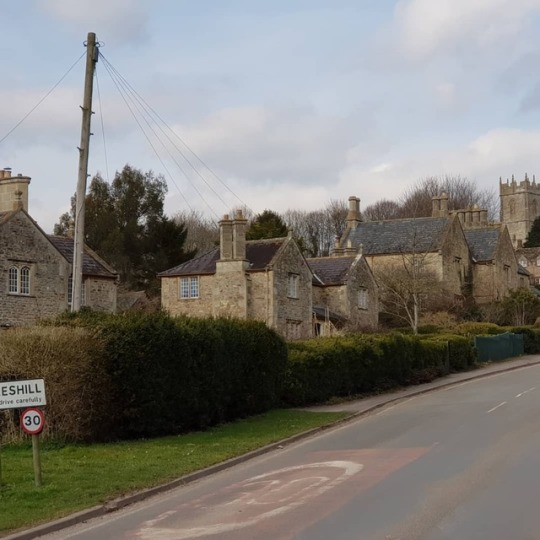
Happy International Day of Forests! Explored around Badbury Hill and The Great Coxwell Barn near #Farringdon in #Oxfordshire. Climb trees and built dens! #internationalforestday2018 #letssavethem #forests #takethekids #homeschooling #familytravelexplore #travelengland2018 (at Badbury Hill)
#letssavethem#homeschooling#takethekids#travelengland2018#oxfordshire#forests#farringdon#internationalforestday2018#familytravelexplore
0 notes
Text
Badbury Rings is north of Bournemouth and is an old Iron Age fort. It’s also a nice place for a short walk, at the top of the hill is a small pillar with a map on the top that shows how far places are away from you.
This slideshow requires JavaScript.
Badbury Rings Badbury Rings is north of Bournemouth and is an old Iron Age fort. It's also a nice place for a short walk, at the top of the hill is a small pillar with a map on the top that shows how far places are away from you.
0 notes